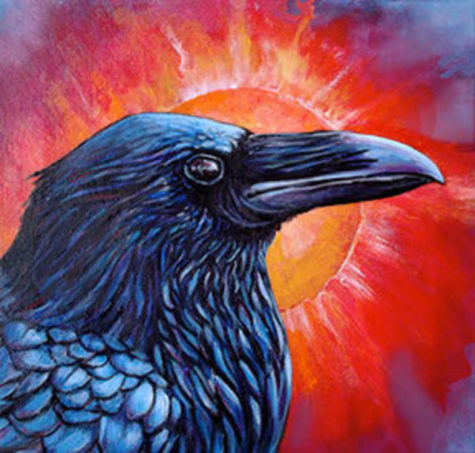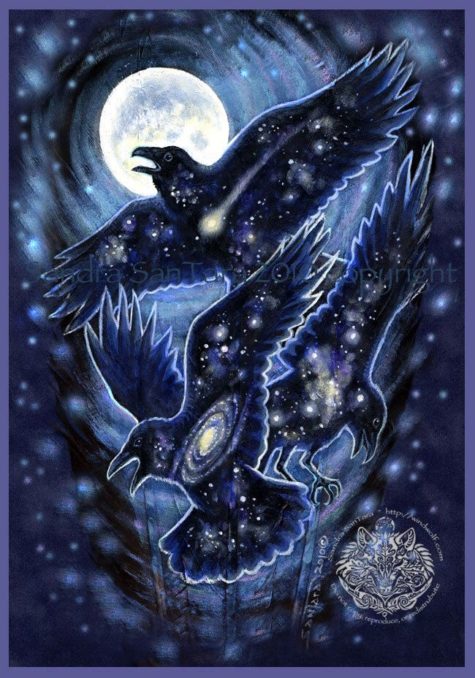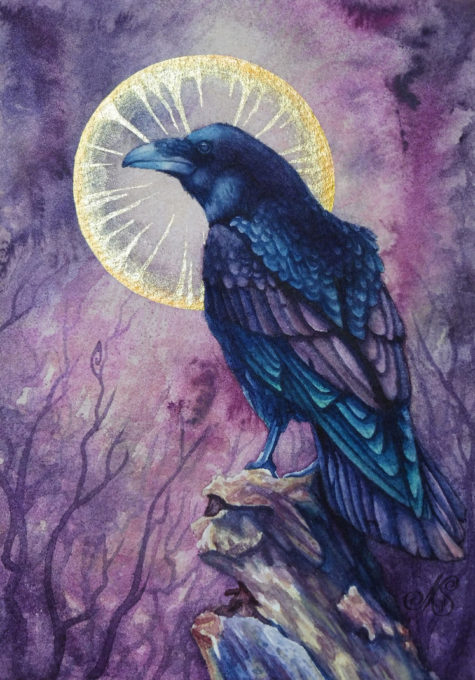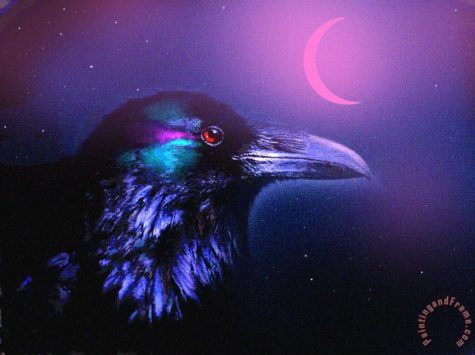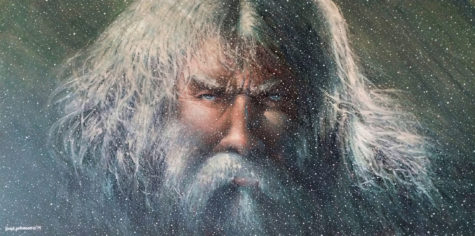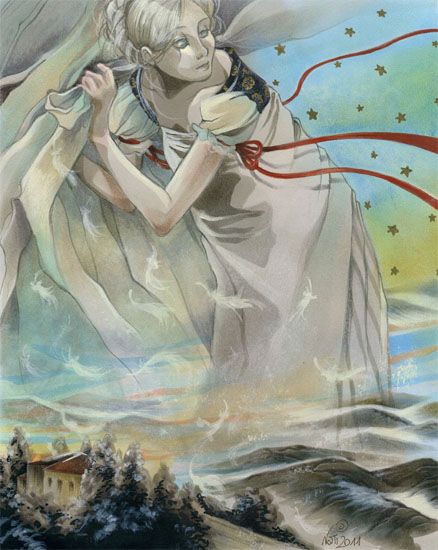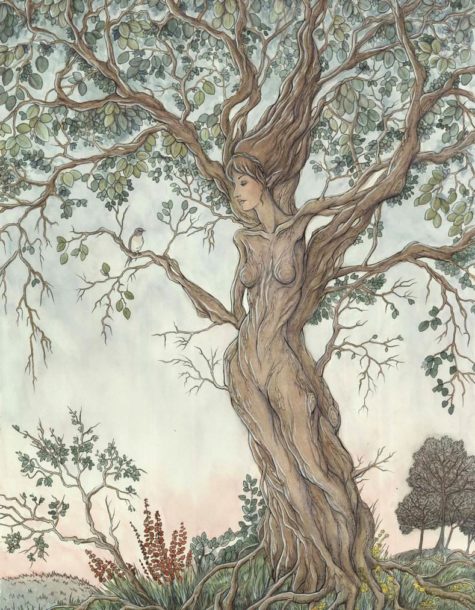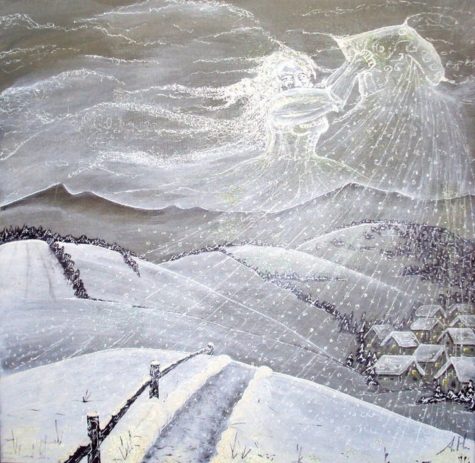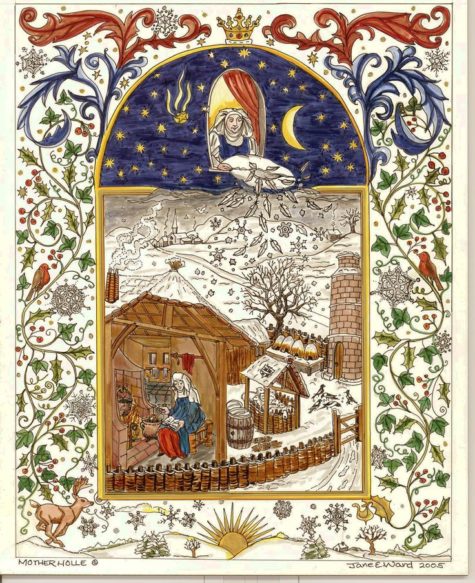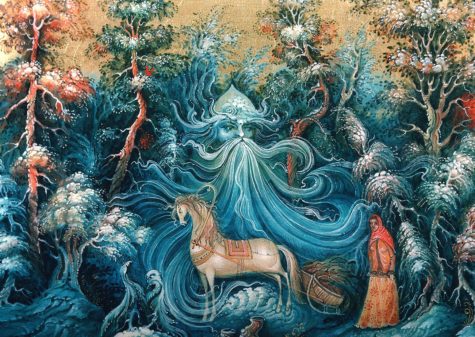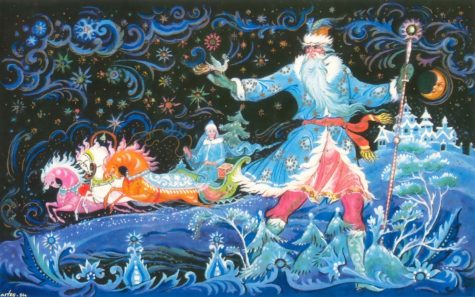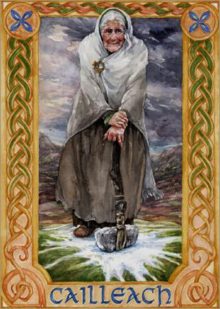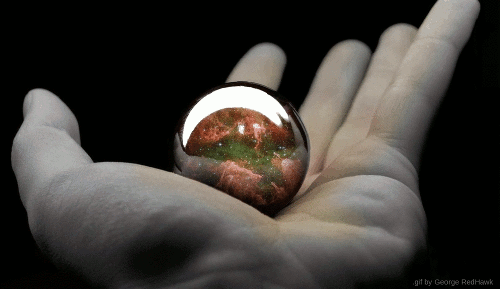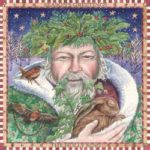Winter
The winter solstice and winter season is the time of greatest power for those with the raven as a totem. The solstice is the shortest day of the year The sun shines the least on this day, thus it is the darkest. From that day forth, the light shines a little more each day This is symbolic of the influence of raven. It teaches how to go into the dark and bring forth the light. With each trip in, we develop the ability to bring more light out. This is creation.
CHANT
Wing so black it shines like Moon at midnight,
O Raven, strong, hear my cry!
Teach me old magick, powerful, bold,
O Raven, eloquent and wise.
The Raven’s keynote is that of magic, shapeshifting, and creation. While its cycle of power is that of winter solstice. The raven is one of those birds that has a tremendous amount of lore and mythology surrounding it, and it is often contradictory. It is a bird of birth and death, and it is a bird of mysticism and magic.
In the near East, the raven was considered unclean because it is a scavenger. It is one of the foods listed as forbidden in the Bible. The raven is one of the birds that Noah sent out after the floods, but it did not return to the ark. On the other hand, also in Biblical lore is the tale of how a raven fed the prophet Elijah when hiding from King Ahab.
In Scandinavian lore, the raven played a significant role. The Norse god Odin had a pair of ravens who were his messengers. Their names were Hugin (thought)and Munin (memory). Odin was known to shapeshift as a raven himself. This reflects the idea of raven being a messenger of the great spiritual realm.
In the Middle Ages the croak of the raven was believed to foretell a death or the outcome of a battle. It was even taught to the common folk in Christian communities that wicked priests became ravens when they died. Even today, some old timers tell how you can expect hot weather when a raven is seen facing a clouded sun.
The raven is a member of the corvids family, to which belong crows and magpies and other such birds. In truth, the only really significant difference between the crow and the raven is in size, the raven being much larger. It would be beneficial to study the information on the crow for anyone who has a raven as a totem. Much of the same information that applies to one, also applies to the other. It is simply a matter of degree. Rather than repeat that information here, I would like to give you some information not generally associated with the crow itself.
The raven has a wealth of myth and lore surrounding it. In many ways it is comparable to the coyote tales of the plains Indians, the Bushmen tales of the mantis and other societies in which an animal plays both a significant and yet confusing role. The coyote was both trickster and wise being-fool and wise one. This was true of the mantis in the tales of the Kalahari Bushmen.
In the Pacific Northwest the raven has this same aura about him. In the Pacific Northwest, raven brought forth life and order Raven stole the sunlight from one who would keep the world in darkness. Nothing could exist without raven. Raven is honored in art and on totem poles, reflecting the tales and mysticism that have developed around it.
With raven, human and animal spirits intermingle and become as one. This is reflected in its deep, rich shiny black. In blackness, everything mingles until drawn forth, out into the light. Because of this, raven can help you shapeshift your life or your being. Raven has the knowledge of how to become other animals and how to speak their languages.
Ravens are great at vocalizations, and they can be taught to speak. They incorporate and mimic the calls of other species. In the Northwest are tales of the Kwakiutl Indians who offered the afterbirth of male newborns to Raven so that when they grew up, they would understand their cries. Raven can teach you to understand the language of animals.
Ravens are playful, and they are excellent tool users. They will use stones and anything else that is available to help them crack nuts and such. They are birds not intimidated by others, and they are very fast and wary Because of this, they are not easy prey for other animals or birds. This implies the ability to teach you how to stir the magic of life without fear They are also known for their amorous behavior, reflecting the strong creative life force to which they have access.
This creative life force can be used to work the magic of spiritual laws upon the physical plane. It can be used to go into the void and stir the energies to manifest that which you most need. All this and more is what raven teaches. If raven has come into your life, expect magic. Somewhere in your life, magic is at play Raven activates the energy of magic, linking it with your will and intention.
Raven speaks of the opportunity to become the magician and/or enchantress of your life. Each of us has a magician within, and it is Raven which can show us how to bring that part of us out of the dark into the light. Raven speaks of messages from the spirit realm that can shapeshift your life dramatically Raven teaches how to take that which is unformed and give it the form you desire.
~Ted Andrews – Animal Speak
Holder of the Oath Ring; The Silent One
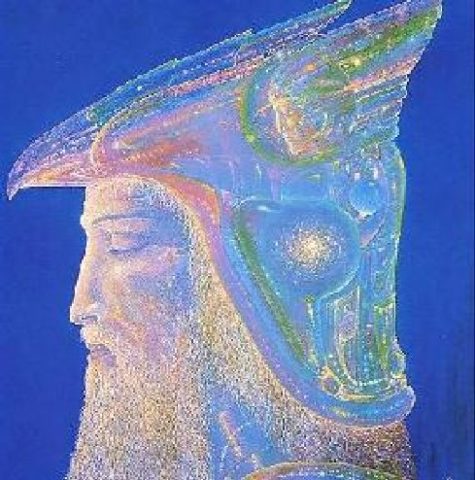
- Also known as: Oller, Ull, Uller, Ullr, Vuldor
- Origin: Norse:
- Rune: Ihwaz
- Tree: Yew (Holler’s home is Ydalir, Yew Tree Valley)
- Favored people: Holler likes the ladies. Skiers love Holler and he seems to love them right back.
Holler is the Lord of Frost and the King of Winter. He is a particularly primordial Norse deity, a mysterious, shadowy spirit. It’s unclear exactly where he sits on the Aesir / Vanir spectrum. Holler may be the son of Sif, the Golden-Tressed One. His father, if any, is unknown, although some suggest that he is of Frost Giant descent.
Holler’s name may be related to “glory.” He seems to have been venerated throughout Scandinavia, the Germanic lands, and the British Isles. According to some myths, when Odin goes wandering, he leaves Holler in charge of Asgard.
Holler is a master archer and hunter and a brilliant skier. Holler skis through the heavens, leaving stars in his wake. He controls the Aurora Borealis. Holler is the lord of justice and dueling. Allegedly invoking his name before a duel brings good luck. When he’s not zipping over the snow on his skis, Holler travels in a ship made from bone.
Holler the Hunter has associations with death. His sacred tree, the yew, is a funerary tree, found in grave yards, not least because of its poisonous berries. Holler may have hunted with poisoned arrows. He may be married to Hulda, weather goddess of birth and death. Like her, he is now associated with the Wild Hunt, and a more negative connotation as the God of Death, Disease and Devastation. It is said that he drags the doomed to his darkest dungeon and delights in dealing out disaster and destruction.
Post-Christianity, many of his more benevolent functions seem to have been transferred to Saint Hubert.
Source: The Encyclopedia of Spirits
- Also known as: Mother Holle, Frau Holle, Hulde
- Origin: Teutonic
- Realms: The sky, underground, mountains, wells
- Constellation: The Milky Way is the street she travels
- Elements: Earth, air, water
- Sacred animals: Wolves, Rabbits
- Color: White, blue
- Spirit Ally: Odin, with whom she sometimes leads the Wild Hunt
- Plants: Holly, elder, juniper, mugwort, flax, Sorcerer’s Violet (Vinca major – sometimes called Frau Holle)
- Sacred Days: The Winter Solstice is Hulda’s feast day. The twelve days between Dec 25 and Jan 6 are sacred to Hulda.
- Offerings: She loves music and dancing.
Manifestations:
A radiantly beautiful blond woman or a fierce old crone. In her guise as Queen of Witches, she has disheveled hair and a wild look.
She may also manifest as a woman when seen from the front but a tree from behind. She may be accompanied by an entourage of torch bearing rabbits who light her way.
About Hulda:
Hulda, a great and ancient goddess of birth and death, presides over a transit station for human souls, a crossroads between life and death. Hulda receives the souls of the newly dead into her realm and releases newborns to live new lives on Earth. Hulda bathes at midday in a fountain from which babies emerge, a well of life.
She was no unknown spirit but a prominent Northern European goddess. Holland is her namesake. Her name may be related to “holy.” Hulda lives in mountain caves and among elder trees, portals to her realm. Her realm may also be accessed via wells. She is sometimes witnessed walking alongside rivers or mountain paths, alone or accompanied by an entourage of rabbits and Fairies. She may be Queen of the Elves.
She plays a prominent part in German folk-lore and superstition. In stormy nights she can be often heard flying through the air, accompanied by weird spirits and witches. On such occasions it is dangerous for ill-doers to be abroad, as they will surely meet with severe punishment; while to the good she frequently appears as a benefactor. Her particular season is winter.
Hulda is a weather spirit. When she shakes her feather bed, it snows on Earth. Rain falls from her laundry rinse water. Fog hovering over a mountain may be smoke from Hulda’s fire. She guards and nurtures all the growing things of the forest. She was a culture-goddess, too, credited with introducing flax to Europe and teaching the art of making linen.
Banished after official conversion to Christianity, people were forbidden to venerate or contact Hulda. Those maintaining that practice were branded witches. Hulda was reclassified as a demon witch-goddess who attacked and harmed children.
She retains dominion over Pagan babies. People were urged to baptize their babies lest they end up in Hulda’s realm. Mother Holle, once so benevolent was transformed into a monster. People warned their children that if they weren’t obedient, Hulda would “get” them.
Vestiges of rituals invoking Hulda’s blessings on baby girls were retained by Ashkenazi Jews (the Hollekreisch), whether because Pagan women found discreet safety in that community rather than convert to Christianity or because Jews perceived Hulda’s resemblance to Lilith. Although rituals survive, many would be shocked and horrified to realize that they invoke a Pagan goddess.
Like Lilith, Hulda is not always so benevolent these days. She is a proud and resolutely Pagan spirit with little patience for hypocrites. Hulda can bestow fertility but she can take it away, too. She has power over storms, raising them as well as soothing them. She can be ambivalent toward people as demonstrated by Mother Holle, the Brothers Grimm fairytail in which she stars.
The theme involves young girls who wander into Hulda’s domain, either inadvertently or deliberately in anticipation of a reward. She rewards the girl who respects her and follows her commands with effort and devotion but causes excrement to rain down upon the lazy, disrespectful girl.
Found in:
- Encyclopaedia of Superstitions, Folklore, and the Occult Sciences
- The Encyclopedia of Spirits
- Names: Father Frost
- Manifestation: Morozko signals his presence with the abrupt sound of ice cracking or trees snapping from the weight of snow.
- Attributes: An icy scepter; anyone who touches his scepter instantly falls asleep and will allegedly never awake.
- Daughter: Snegurochka – The Snow Queen.
Morozko is responsible for the ferocity of Russian winters. Whatever he touches with his staff instantly freezes. Morozko can raise or lower the temperature and cause snow to fall. Morozko is petitioned for snow and for safety from snow.
In a famous Russian fairy tale, a step-mother sends her step-daughter out into the forest at night, assuming that Morozko in the guise of freezing weather will kill the girl. Morozko does find the girl, but when he inquires whether she’s cold, the girl answers so politely and bravely that even his cold heart is touched.
Father Frost makes her a fire and sends her home with gifts the next morning.
The step-mother then sends her own daughter out into the woods at night, presuming that she’ll come home with valuable gifts, too. The spoiled girl whines and complains to Father Frost, who lets her freeze to death.
In 1966 the Russian film “Morozko” features a kinder, gentler Father Frost. He doesn’t kill the step-sister, only humiliates her.
Found in: The Encyclopedia of Spirits
Ded Moroz or Father Frost, the Slavic version of Santa Claus, long ago became the symbol of Russian winter, New Year’s and presents. He is usually accompanied by his granddaughter Snegurochka riding with an evergreen tree in a traditional Russian troika, a sleigh drawn by three horses abreast.
Ded Moroz is a Slavic fictional character similar to that of Father Christmas. The literal translation is “Old Man Frost”, often translated as “Grandfather Frost”. Ded Moroz brings presents to children and often delivers them in person on New Year’s Eve.
Ded Moroz is accompanied by Snegurochka the “Snow Maiden”, his granddaughter and helper, who wears long silver-blue robes and a furry cap or a snowflake-like crown. She is a unique attribute of Ded Moroz, since similar characters in other cultures don’t have a female companion.
The original Russian gift-giver was Saint Nicholas, the country’s Patron Saint, whose Feast Day is celebrated on December 6th. The image of Saint Nicholas originates from the image of another hero – the ancient Morozko. In Russian folklore Morozko is a powerful hero and smith who chains water with his “iron” frosts. Morozko was not hostile to people – he helped them and presented them with awesome presents.
In fairy tales Morozko is at times kind and at times evil. To be precise, he is kind towards the hard working and the good-hearted, but extremely severe with the mean and the lazy. And it is not about justice only. It is rather about two personalities living in one magical person.
Read more about Morozko here: Morozko
Ded Moroz and the Communists
In 1917, with the Bolshevik Revolution, Ded Moroz was banished into exile. He was considered a kind of a kids’ god, which was impermissible during Soviet times when Russian leaders were flatly against any manifestations of religiousness. But only 20 years later Ded Moroz returned to the country and New Year’s celebrations became public. Since then Ded Moroz and Snegurochka appear on New Year’s Eve, putting presents under the fir tree for the kids to find in the morning.
Visiting him at home
Those wishing to make acquaintance with Ded Moroz in his domestic surroundings can board trains and travel to the picturesque town of Veliky Ustyug in the Vologodsky Region of Northern Russia (approximately 500 miles northeast of Moscow) where, situated in the dense taiga forest at the confluence of three rivers, sits the log cabin of Ded Moroz.
There, in Veliky Ustyug, Ded Moroz waits through the summer reading letters that kids from all over the country have written to him regarding the presents they wish to find under the New Year’s Tree the next January 1st.
Characteristics
Ded Moroz has a number of distinguishing features. His shirt and trousers are made of flax and are usually decorated with white geometrical ornamental patterns. His fir coat is ankle long and is embroidered with silvery stars and crosses. His a semi-round fur hat is often red and embroidered with pearls. He has a long white beard.
Ded Moroz wears mittens and a wide white belt. His footwear is luxurious – high boots with silver ornamentation, but on an exceptionally chilly day Ded Moroz can opt for valenki!
And finally he never appears without his pikestaff – made either of silver or crystal, it possesses a twisted gripe. It helps the not-so-young Ded Moroz make his way through the deep dark forest during long winter nights.
Sources: Russiapedia and Wikipedia
This Neolithic goddess, known variously as the “blue hag”, the “Bear goddess” and “Boar goddess”, “owl faced”, and “ancient woman”, has survived through the ages. Coming from the continent, Her worship spread to the British Isles early after the recession of the glaciers. The proto-Celtic peoples honored Cailleach and blended Her varying aspects, creating images invoking both love and terror. The various names (see below) that Cailleach has been worshipped in lend a clue to Her wide spread worship:
Names: Beare, Béarra, Béirre, Bhéara, Bheare, Bhéirre, Bhérri, Boi, Bui, Cailliaech, Cailliach, Cailleach Beara, Caillech Bherri, Calliagh Birra, Cally Berry, Carline, Digde, Dige, Dirra, Dirri, Duineach, Hag of Beara, Hag of Beare, Mag-Moullach, Mala Liath, Nicnevin, and Scotia,
Titles: Ancient Woman, Bear goddess, Blue Hag, Boar Goddess, Creator of Storms, Crone, Duineach, Goddess of Sovereignty, Many Followers, Old Woman, Owl Faced, and The Popular
The Cailleach Beara is one of the oldest living mythological beings associated with Ireland. According to the ancient stories, she has a conversation with Fintan the Wise and the Hawk of Achill and both agree that she has outlived them, saying ‘Are you the one, the grandmother who ate the apples in the beginning?’ (apples are associated with immortality and are considered the food of the gods)
The Cailleach Beara is ever-renewing and passes through many lifetimes going from old age to youth in a cyclic fashion. She is reputed to have had at least fifty foster children during her ‘lives’. She usually appears as an old woman who asks a hero to sleep with her, if the hero agrees to sleep with the old hag she then transforms into a beautiful woman.
In Scotland, where she is also known as Beira, Queen of Winter, she is credited with making numerous mountains and large hills, which are said to have been formed when she was striding across the land and accidentally dropped rocks from her apron. In other cases she is said to have built the mountains intentionally, to serve as her stepping stones. She carries a hammer for shaping the hills and valleys, and is said to be the mother of all the goddesses and gods.
She is considered to be the daughter of Grainne, or the Winter Sun. She is affectionately known as ‘Grandmother of the Clanns’ and ‘the Ancestress of the Caledonii Tribe’. The legends of the Caledonii tribe speak of the “Bringer of the Ice Mountains”, the great blue Old Woman of the highlands. Called Cailleach, Cailleach Bheur, Scotia, Carline or Mag-Moullach by the people, She was the Beloved Mountain Giantess who protected the early tribe from harm and nurtured them in Her sacred mountains.
The Cailleach Beara is usually associated with Munster in particular Kerry and Cork. Her grandchildren and great-grandchildren formed the tribes of Kerry and it’s surroundings. And she is considered a goddess of sovereignty giving the kings the right to rule their lands.
Traits and Abilities:
She herds deer. She fights Spring. Her staff freezes the ground.
She is sometimes depicted as an old hag with the teeth of a wild bear and boar’s tusks or else is depicted as a one-eyed giantess who leaps from peak to peak, wielding Her magical white rod and blasting the vegetation with frost. Cailleach’s white rod, or slachdan, made of birch, bramble, willow or broom, is a Druidic rod which gives Her power over the weather and the elements.
Cailleach is also a goddess who governs dreams and inner realities. She is the goddess of the sacred hill, the Sidhe, and the place where we enter into the hidden realm of the Fey and spirit beings. Sacred stones, the bones of the earth, are Her special haunts. Cailleach is connected to the ‘bean sidhe’ or banshee (which means ‘supernatural woman’) who are the wild women of the Fey.
In Scotland, the Cailleachan (‘old women’) were also known as The Storm Hags, and seen as personifications of the elemental powers of nature, especially in a destructive aspect. They were said to be particularly active in raising the windstorms of spring, during the period known as A’ Chailleach.
Là Fhèill Brìghde is the day the Cailleach gathers her firewood for the rest of the winter. Legend has it that if she intends to make the winter last a good while longer, she will make sure the weather on February 1 is bright and sunny, so she can gather plenty of firewood to keep herself warm in the coming months. As a result, people are generally relieved if February 1 is a day of foul weather, as it means the Cailleach is asleep, will soon run out of firewood, and therefore winter is almost over.
On the Isle of Man, where She is known as Caillagh ny Groamagh, the Cailleach is said to have been seen on St. Bride’s day in the form of a gigantic bird, carrying sticks in her beak
On the west coast of Scotland, the Cailleach ushers in winter by washing her great plaid (tartan) in the Whirlpool of Coire Bhreacain (cauldron of the plaid). . This process is said to take three days, during which the roar of the coming tempest is heard as far away as twenty miles inland. When she is finished, her plaid is pure white and snow covers the land.
Cailleach is also the guardian spirit of a number of animals. She is associated with the ancient tradition of herding reindeer. This means that the reindeer (and all deer) are Her cattle; She herds and milks them and often gives them protection from hunters. Swine, wild goats, wild cattle, and wolves are also Her creatures. Cailleach is also a fishing goddess, as well as the guardian of wells and streams.
Related Content:
